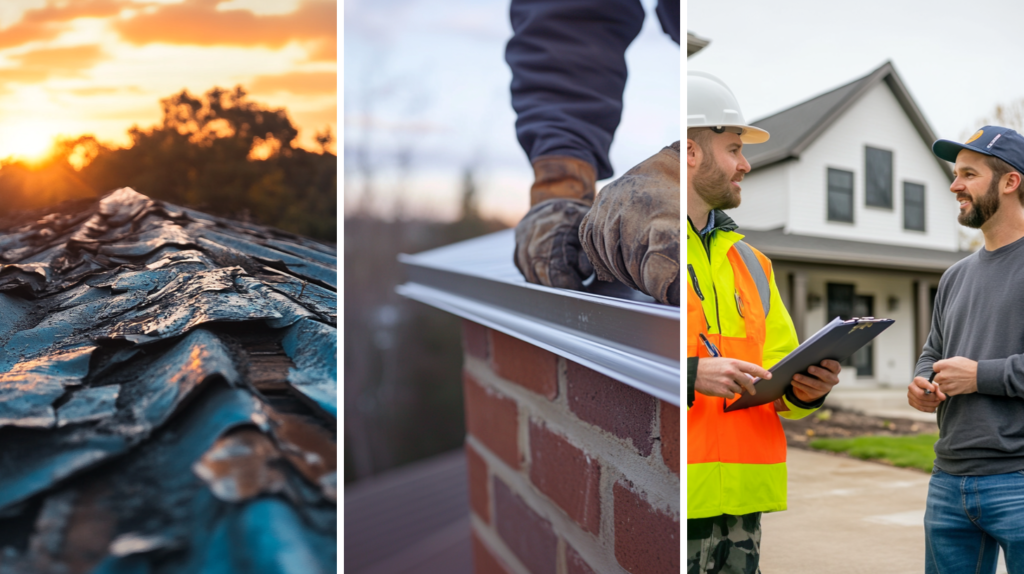
Many homeowners and businesses are now considering eco-friendly options when choosing roofing materials. An eco-friendly roof offers numerous benefits to the environment and the building occupants. These environmentally conscious roofing materials help reduce the carbon footprint, conserve energy, improve indoor air quality, and contribute to a sustainable future. Whether planning a new construction project or replacing your existing roof, understanding what makes a roof eco-friendly can help you make an informed decision that benefits your budget and the planet. Durability Durability is crucial when choosing eco-friendly roofing materials as it directly contributes to environmental sustainability. A durable roof ensures long-lasting protection for a building and minimizes the need for frequent replacements, reducing waste and conserving resources. When discussing the durability of roofing materials, it is essential to consider their ability to withstand various environmental factors. Moisture, wind, fire, flying debris, snow, ice, and hail are common challenges that a durable roof should be able to withstand. Moisture, including rain, can cause significant damage to roofs if they are not properly built and maintained. A durable roofing material will have excellent moisture resistance, preventing water leaks and potential mold growth. Strong winds can also pose a serious threat to a roof's integrity. Roofing materials with high wind resistance can prevent damage such as uplift and detachment, ensuring the roof's long-term functionality. Fire safety is another vital aspect to consider. Durable, fire-resistant roofing materials provide a layer of protection to the building, reducing the risk of significant fire damage. Flying debris, such as tree branches or other objects, can puncture and tear roofing materials. A durable roof should withstand such impacts, maintaining its integrity and preventing leaks. In regions with heavy snow, ice, or hail, durability is crucial to protect against damages caused by their weight or impact. A durable roof can withstand these elements, minimizing the risk of collapse or necessary repairs. Prioritizing durability when choosing eco-friendly roofing materials is essential for environmental sustainability. We can ensure a long roof lifespan by selecting materials that can withstand moisture, wind, fire, flying debris, snow, ice, and hail, reducing waste and conserving resources in the long run. Embodied Energy Embodied energy is consumed throughout a roofing product's life cycle, including production, transportation, installation, use, and disposal. Several key factors contribute to embodied energy in roofing products, and understanding their impact is crucial for those seeking eco-friendly options. Firstly, the production stage plays a significant role. Mining raw materials for roofing products, such as metal, clay, or asphalt, requires energy-intensive processes. These materials then undergo processing, which involves further energy consumption. The extraction, refining, and manufacturing of these materials contribute significantly to the embodied energy of the final product. Secondly, transportation adds to the embodied energy. Roofing products are often transported over long distances between manufacturing and construction sites. The fuel consumption and associated emissions from trucks, ships, or trains used for transportation can contribute substantially to the overall embodied energy of the product. Lastly, delivering roofing materials to the end consumer contributes to embodied energy. This includes packaging, storage, and handling, often requiring additional energy resources. Considering these factors, it becomes evident that reducing embodied energy in roofing products is essential for minimizing environmental impact. Individuals can be crucial in promoting eco-friendly roofing options by choosing materials that require less energy-intensive processes or those sourced locally. Recycling and Reusability Recycling and reusability play crucial roles in the manufacturing of eco-friendly roof tiles. They offer numerous environmental benefits and reduce our impact on the planet. By actively recycling materials, we can reduce landfill waste and promote the potential for complete reusability. The importance of recycling in producing eco-friendly roof tiles cannot be overstated. Recycling reduces greenhouse gas emissions, contributing to significant environmental benefits. By diverting materials from landfills, we decrease the release of harmful gases into the atmosphere, reducing air and water pollution. Additionally, recycling saves energy, as producing materials from recycled sources requires less energy than creating them from scratch. Various sustainable roofing materials manufactured from recycled or sustainable sources are available. Recycled metal, for example, can be utilized to create durable and long-lasting roof tiles, with the added benefit of being 100% recyclable at the end of their lifespan. Rubber and plastic roofing materials made from recycled materials are also increasingly popular, as they offer durability and resistance to harsh weather conditions. Other sustainable options include sustainably harvested wood shakes from responsibly managed forests and bamboo, a fast-growing and renewable resource. Clay tiles, often manufactured using locally sourced clay, provide an environmentally friendly alternative, as they can be easily recycled or reused after being used on a roof. Contribute to a Healthy Ecosystem Choosing eco-friendly roofing materials is crucial in contributing to a healthy ecosystem. These materials are designed with the environment in mind, as they are produced and applied without releasing or emitting toxic chemicals. Unlike traditional roofing materials, eco-friendly options prioritize sustainability and environmental responsibility. They are produced using renewable resources and have minimal impact on the ecosystem during manufacturing. Additionally, they are applied using eco-friendly installation techniques that avoid harmful chemicals. The benefits of using eco-friendly roofing materials are abundant. First and foremost, they help minimize environmental impact by reducing carbon emissions and waste generation. Individuals can actively participate in preserving biodiversity and the planet's overall health by choosing these materials. Furthermore, eco-friendly roofing materials often have a longer lifespan, reducing the need for replacement and the associated environmental costs. They can also promote energy efficiency, reduce a building's carbon footprint, and help conserve natural resources. Learn more about eco-friendly materials and the roofing services we offer: skyroofingconstructiontx.com/eco-friendly-materials/ https://flic.kr/p/2q13swD

No comments:
Post a Comment